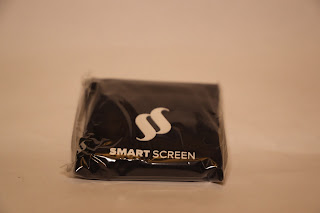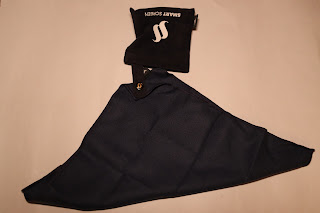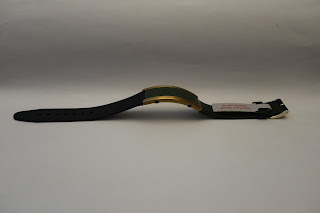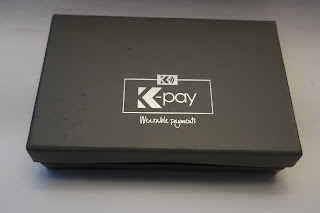Nothing is a London based consumer tech company who's mission is "to remove barriers between people and the technology we all use. By designing intuitive and smart technology that improves our lives without getting in the way Nothing wants to bring back artistry, passion, and trust. We want to help people unlock new and meaningful experiences not just in consumer electronics, but also in life." (from their website).
The first product is the ear (1) an in-ear earphone which features noise cancellation. They come with the usual 3 sized silicon tips (small, medium and large - though it's a shame there's no memory foam ones available). They come in a plastic case which holds the earphones magnetically so they align with the charging pins. The right earphone has a red dot on it (as does the magnet in the base) so it's easy to ensure the correct earphone goes into the right ear (sic). They are pretty light at 4.7 grams.
They come in a black box with pictures of the earphones, but to open it there's a tear strip so it can be pulled apart. Inside there's a shiny metalised case that pulls open and contains the earphone base (the earphones are in it), a side part containing the ear tips and another containing the USB C charging cable. The outer box does seem a bit of a waste.
The case is 58.6 by 58.6 by 27.3 mm and has a USB C port and a button which is pressed to start the pairing process. It can also be charged wirelessly through any QI compatible charger. It weighs 57.4 grams without the earphones.
There's an accompanying app (iOS and Android) that when connected shows the charge of the left and right earphones.
It allows switching between Noise Cancelation, Transparency and off (and whether it light or maximum).
Then the equalisation can be selected (Balanced, More Treble, More Base, Voice).
Tap settings can also be selected for both earphones (Triple Tap -> Next Song, Previous Song, nothing and Tap & Hold -> Noise Cancellation, nothing).
The app also allows (per each ear pair incase you've paired multiple pairs) In-Ear detection, Latency Mode (Normal or Low - designed for playing games but more prone to interference from other devices) and Firmware Update (it shows the current version and will allow clicking if a new version is available, updates are via Bluetooth and it can be quite slow and it's easy to think nothing's happening before the upgrade starts).
The instructions that come in box imply that the the earphones should be paired with the app (there's an option in the settings), however on iOS it did pair with the app, but music and other apps didn't seem to be able to output sounds through the earphones. When paired within the Bluetooth settings, the app recognised that the earphones were paired and all the functions worked and sounds and music could be heard though any app.
The batteries in the earphones should last around 5 hours and the case holds enough for 34 hours use (though you obviously need to put them into the case to charge them) - if active noise cancellation is on, then the total case time reduces to 24 hours.
The quality seems pretty good and they also work well for video conference calls (well some better than other, Google Meet decided to echo back your own voice).
The signal travels well and audio only started breaking up about 10 metres from the connected computer (and going through some internal walls).
With ear detection on, the music should pause, but when using with a device other than a phone it doesn't seem to work while triple tapping does move to the next track. This behaviour seems to have changed since the last firmware update as jiggling your head around (or dancing vigorously) would trigger something and the music would pause.
Overall the build and sound quality is very good and for only £99 pretty good value compared to fruity alternatives. They are available directly from Nothing's site and should arrive in a few days.



























